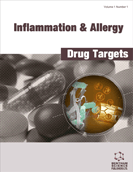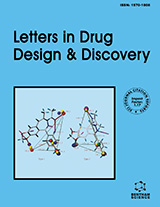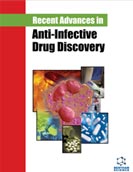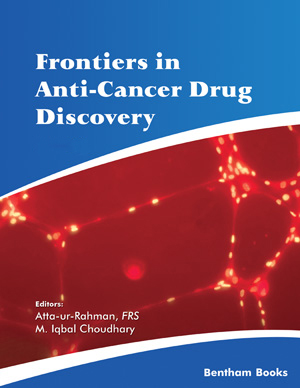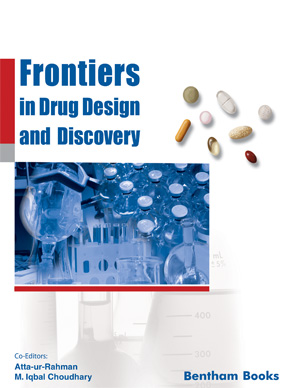Abstract
Chronic idiopathic urticaria is a common skin disorder characterized by recurrent appearance of wheals and/or angioedema for more than 6 weeks without an identifiable cause. Consensus guidelines suggest use of leukotriene receptor antagonists (montelukast or zafirlukast) in patients whose urticaria is resistant to antihistamines. Our objectives were (1) document the efficacy of montelukast in our patients, and (2) evaluate whether any clinical features or available laboratory investigations were associated with a response to montelukast.
Patients who received montelukast between the years 2008-2011 (4-year period) were retrospectively identified from clinic letters. Clinical features and laboratory investigations were collected and analyzed. The primary end point was adequate control of disease without the need for systemic steroid therapy.
25 patients (10 males and 15 females; median age, 33 years; age range, 13-66 years) with an average duration of urticaria at 3.8 years received montelukast 10mg daily. 12 patients (48%) were better on montelukast with combined anti-H1 and anti-H2 therapy, with no statistical significance between median age and duration of urticaria between males and females. In 11 patients, montelukast had no effect and in 2 patients the urticaria worsened after montelukast was started. 15 patients had peripheral blood basopenia of which 5 patients responded to montelukast. Two patients had positive antinuclear antibody, 3 thyroid peroxidase antibodies and 4 with positive basophil histamine release. All 20 patients who had complement C3 and C4 levels done were within normal limits. Four of 6 patients (67%) with positive specific IgE responded to montelukast and combined anti-H1/H2 therapy.
Almost half of our patients with chronic urticaria responded to montelukast and combined anti-H1 and anti-H2 therapy. We were unable to identify any clinical features or laboratory markers that were associated with a response to montelukast. Further studies are required to understand the failure of response of leukotriene inhibition in urticaria.
Keywords: Antihistamine, chronic idiopathic urticaria, leukotriene, montelukast
Inflammation & Allergy - Drug Targets (Discontinued)
Title:Efficacy of Montelukast as Added Therapy in Patients with Chronic Idiopathic Urticaria
Volume: 11 Issue: 3
Author(s): Sujoy Khan and Nuala Lynch
Affiliation:
Keywords: Antihistamine, chronic idiopathic urticaria, leukotriene, montelukast
Abstract: Chronic idiopathic urticaria is a common skin disorder characterized by recurrent appearance of wheals and/or angioedema for more than 6 weeks without an identifiable cause. Consensus guidelines suggest use of leukotriene receptor antagonists (montelukast or zafirlukast) in patients whose urticaria is resistant to antihistamines. Our objectives were (1) document the efficacy of montelukast in our patients, and (2) evaluate whether any clinical features or available laboratory investigations were associated with a response to montelukast.
Patients who received montelukast between the years 2008-2011 (4-year period) were retrospectively identified from clinic letters. Clinical features and laboratory investigations were collected and analyzed. The primary end point was adequate control of disease without the need for systemic steroid therapy.
25 patients (10 males and 15 females; median age, 33 years; age range, 13-66 years) with an average duration of urticaria at 3.8 years received montelukast 10mg daily. 12 patients (48%) were better on montelukast with combined anti-H1 and anti-H2 therapy, with no statistical significance between median age and duration of urticaria between males and females. In 11 patients, montelukast had no effect and in 2 patients the urticaria worsened after montelukast was started. 15 patients had peripheral blood basopenia of which 5 patients responded to montelukast. Two patients had positive antinuclear antibody, 3 thyroid peroxidase antibodies and 4 with positive basophil histamine release. All 20 patients who had complement C3 and C4 levels done were within normal limits. Four of 6 patients (67%) with positive specific IgE responded to montelukast and combined anti-H1/H2 therapy.
Almost half of our patients with chronic urticaria responded to montelukast and combined anti-H1 and anti-H2 therapy. We were unable to identify any clinical features or laboratory markers that were associated with a response to montelukast. Further studies are required to understand the failure of response of leukotriene inhibition in urticaria.
Export Options
About this article
Cite this article as:
Khan Sujoy and Lynch Nuala, Efficacy of Montelukast as Added Therapy in Patients with Chronic Idiopathic Urticaria, Inflammation & Allergy - Drug Targets (Discontinued) 2012; 11 (3) . https://dx.doi.org/10.2174/187152812800392742
| DOI https://dx.doi.org/10.2174/187152812800392742 |
Print ISSN 1871-5281 |
| Publisher Name Bentham Science Publisher |
Online ISSN 2212-4055 |
 38
38Related Articles
-
Novel Therapeutic Approaches and Targets for Treatment of Chronic Urticaria: New Insights and Promising Targets for a Challenging Disease
Current Pharmaceutical Biotechnology Complications Associated with Recombinant Tissue Plasminogen Activator Therapy for Acute Ischaemic Stroke
CNS & Neurological Disorders - Drug Targets Intravenous Immunoglobulin Therapy in Dermatologic Disorders
Inflammation & Allergy - Drug Targets (Discontinued) Novel Possible Pharmaceutical Research Tools: Stem Cells, Gene Delivery and their Combination
Current Pharmaceutical Design Modeling Anti-Allergic Natural Compounds by Molecular Topology
Combinatorial Chemistry & High Throughput Screening Topical Imiquimod: Mechanism of Action and Clinical Applications
Mini-Reviews in Medicinal Chemistry Cross-Reactive Reactions to Nonsteroidal Anti-Inflammatory Drugs
Current Pharmaceutical Design The Emerging Role of Bradykinin in the Pathogenesis of Osteoarthritis and its Possible Clinical Implications
Current Rheumatology Reviews Effects of ACE-Inhibitors and Angiotensin Receptor Blockers on Inflammation
Current Pharmaceutical Design Editorial (Hot Topic: Inflammation, Coagulation, Vascular Permeability and Thrombosis)
Current Vascular Pharmacology The Role of Inflammation and Allergy in Acute Coronary Syndromes
Inflammation & Allergy - Drug Targets (Discontinued) Efficacy and Safety of H1-Antihistamines: An Update
Anti-Inflammatory & Anti-Allergy Agents in Medicinal Chemistry Adenovirus Vectors and Subviral Particles for Protein and Peptide Delivery
Current Gene Therapy What Does a Pediatrician Need to Know About Chronic Diarrhea?
Current Pediatric Reviews Ethnicity and Drug Therapy for Hypertension
Current Pharmaceutical Design Omalizumab in the Treatment of Chronic Urticaria: The Effect of Drug Co-Administration and Co-Morbidities
Anti-Inflammatory & Anti-Allergy Agents in Medicinal Chemistry Hymenoptera Venom Proteins and Peptides for Diagnosis and Treatment of Venom Allergic Patients
Inflammation & Allergy - Drug Targets (Discontinued) Phenolics Constituents of Different Types of Propolis and their Antimicrobial Activities
Anti-Infective Agents Provocation Tests in Diagnosing Drug Hypersensitivity
Current Pharmaceutical Design Adduct Formation and Context Factors in Drug Hypersensitivity: Insight from Proteomic Studies
Current Pharmaceutical Design


